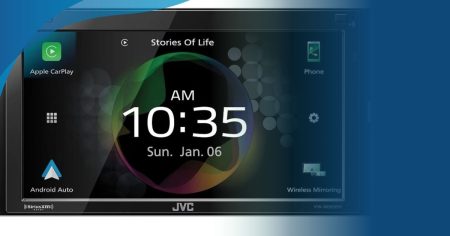The vehicle-to-vehicle (V2V) communication technology is being increasingly integrated by automobile original equipment manufacturers (OEMs) in their offerings due to the soaring public awareness about passenger and vehicle safety. As per the National Highway Traffic Safety Administration (NHTSA) under the U.S. Department of Transport, V2V communication messages have a range of more than 300 m, and they can detect dangers obscured by weather, traffic, or terrain. Additionally, V2V communication enhances the crash avoidance systems currently available that use cameras and radars to identify collision threats, thereby helping in reducing the number of road accidents.
In addition, the rising integration of the autonomous vehicle technology will help the vehicle-to-vehicle communication market progress at a robust CAGR of 16.6% during 2020–2030. The market was valued at $14.5 billion in 2019, and it is expected to generate $77.1 billion revenue by 2030. The adoption of autonomous features, such as advanced driver-assistance systems (ADAS), has enhanced the driving experience and vehicle safety by allowing automobiles to communicate and analyze decisions in complex traffic conditions.
In recent times, V2V communication solution providers have been engaging in facility expansions, partnerships, and product launches to reach out to a greater number of automotive OEMs and aftermarket firms. For example, in November 2019, Visteon Corp. partnered with Tata Communications Ltd. to receive digital infrastructure from the latter. This collaboration enables Visteon Corp. to develop more-flexible and secure telematics solutions and expand its geographical horizons.
At present, BMW AG, Zhejiang Geely Holding Group, DENSO CORPORATION, Savari Inc., Audi AG, QUALCOMM Inc., Infineon Technologies AG, HARMAN International Industries Inc., and Delphi Automotive PLC are offering cellular-based technology and dedicated short-range communication (DSRC) solutions. Both these connectivity technologies can be deployed in THE aftermarket devices as well as OEM devices that are installed in passenger cars and commercial vehicles. In the coming years, automakers will deploy V2V communication solutions in commercial vehicles at the higher rate due to the increasing implementation of stringent government regulations and surging adoption of cloud-based fleet management telematics solutions.
According to P&S Intelligence, North America dominated the vehicle-to-vehicle communication market in the preceding years, wherein the U.S. emerged as the larger user of these solutions. This can be primarily attributed to the increasing penetration of advanced technologies, such as ADAS and telematics, the mounting investments being made by private and government organizations in them, and rising implementation of favorable policy frameworks in the U.S. Moreover, the surging awareness about vehicle safety and the rising need to stay connected will fuel the adoption of the V2V technology in the region.
Whereas, Latin America, Middle East, and Africa (LAMEA) is expected to adopt V2V communication technology at the highest rate in the forthcoming years. This will be due to the increasing integration of telematics solutions in passenger cars and the mounting concerns and awareness of fleet owners regarding driver safety and vehicle diagnostics and tracking. Moreover, the Asia-Pacific (APAC) region is expected to display a high inclination toward V2V communication solutions due to the surging consumer focus on vehicle and passenger safety and escalating demand for fleet management solutions in India and China.
Thus, the rising public awareness about vehicle and passenger safety and burgeoning demand for autonomous vehicles will fuel the adoption of the V2V communication technology in the forthcoming years.





